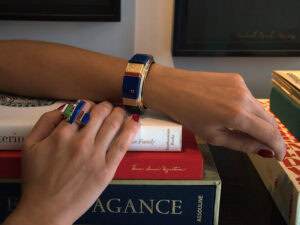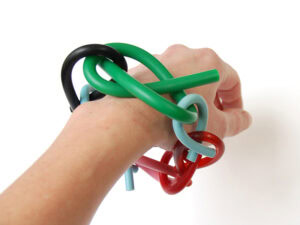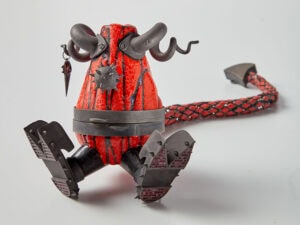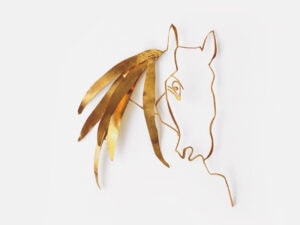Art Jewelry Forum’s Trip to Amsterdam, the World’s Heart of Contemporary Art Jewelry
October 10–14, 2013
Thursday, October 10

Friday, October 11
After 10 years of renovation, the newly re-opened Rijksmuseum has a new and extended jewelry department. The author and collector Marjan Unger, who donated an important part of the collection, met us in the entrance hall with the museum curator Dirk Jan Biemond. Marian Unger has been working as a freelance curator and writer all her life, and whenever she could, she bought a piece of jewelry from the twentieth century. Before her donation, the museum collection ended with the Art Nouveau period, around 1910, but now the Rijksmuseum’s collection is showing pieces up to 1980. The museum display of jewelry is restrained and elegant, but it grabs the visitor’s attention when coming in the exhibition hall. Everyone coming into this part of the museum will have a beautiful visual experience. The pieces are mounted on single holders in the showcases and also mounted on the wall. There is no catalog yet, but the museum is working on it and Marjan Unger’s new book is getting published next year.
The first studio visit was with Beppe Kessler. She presented herself and her work in a chronological timeline dating from the late 1970s and her graduation from the Gerrit Rietveld Academie´s textile department to the present. During the years, she has incorporated textiles in both her jewelry and paintings with an exquisite awareness of materials. There have been many different themes over the years, and one of the most recent is making “music by music,” using materials such as vinyl, CDs, and piano keys of ebony and ivory.
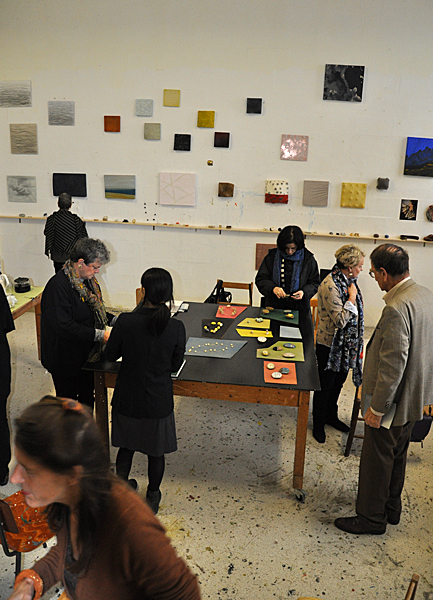
Gijs Bakker is one of the most important people in the Dutch jewelry scene without a doubt. He was trained as a jewelry maker and industrial designer at the Gerrit Rietveld Academie and also at Konstfack in Stockholm. In 1993, he started Droog design, the new movement that put contemporary Dutch design on the world map. Ever since then, Dutch design has been one of the main attractions of the annual Salone del Mobile in Milan. The studio of Gijs Bakker is on one of the beautiful Amsterdam canals. This typical townhouse is divided in two parts. The front section is for work and business, and the back, facing the garden, is private. Bakker showed us a wide selection of his work, including pieces from his first exhibition in 1967 until today. One of the pieces Bakker discussed was the soccer player, in which he uses diamonds together with computer–generated photos.
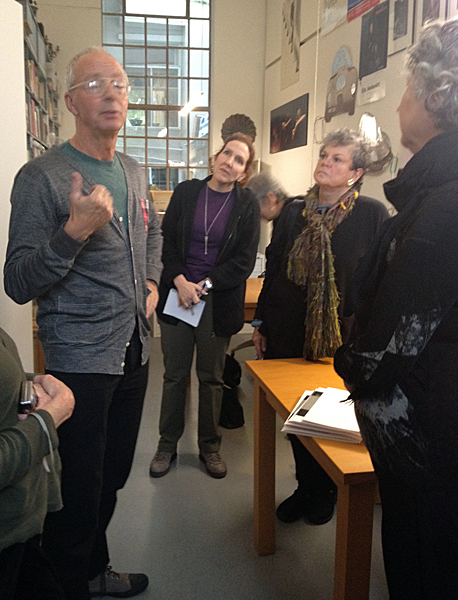
Next on our list was the well-known Galerie Ra, which was opened in 1976 by Paul Derrez and is still run by Derrez and his husband Willem Hoogstede. Galerie Ra represents 50 artists from all over the world, and every two months they organize a new temporary exhibition. Since its opening, Galerie Ra has been a major platform for showing art jewelry. After Galerie Louise Smit closed at the end of 2012, it has become even more important as one of the few galleries showing this kind of jewelry. Noon Passama, who is originally from Bangkok and is also the 2012 AJF Emerging Artists award winner, was at the gallery to show us her fine, shiny button brooches and more recent portrait brooches.
Dinner was at D´Vjiff Vlieghen (Five Flies), a historical place situated at the Spuistraat. It occupies five seventeenth-century houses with an interior decorated with Delft tiles and Rembrandt etchings.
Saturday, October 12

Lunch on this day was at the restaurant in the Stedelijk Museum with Marjan Boot as our guest.
Galerie Rob Koudjis, located in the famous “nine canals” section of Amsterdam, was our next stop. Rob and his companion Ward Schrijver run the gallery. Rob presented the current work of Ruudt Peters, which he finds very interesting because Ruudt Peters is “re-inventing” himself every three years. This show was the result of three months in China where Peters studied Chinese alchemy. He came back full of the experience and set up the exhibition Qi with 14 pieces of agate jewelry and 99 ceramic men.
Ruudt Peters’s studio was next. He opened the door at Berenstraat all dressed in blue. On a long table in the middle of the room, he laid out work from various times in his career. As we sipped tea served by his assistant, Peters talked about his work in a personal way as he jumped between different themes and periods. Ruudt Peters has also worked as a professor in Stockholm for five years at Konstfack, which has played an important role for the Swedish development of art jewelry.
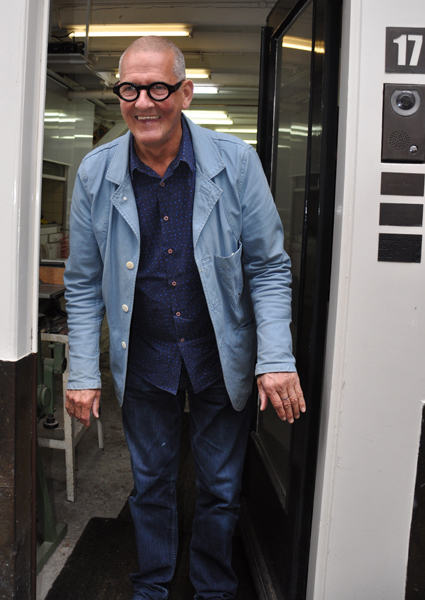
One of the very few disappointments on the trip was that the renowned artist Ted Noten had the flu, so he couldn’t join us. Luckily, in his absence, his faithful crew led by Marcel van Kan sprang into action. They are a fantastic group and clearly happy about their place of work. Ted Noten has an obvious fascination with guns. When I asked why, I got the following answer: when he moved his studio to its current location, the neighborhood was unsafe, and so to clean things up, Ted started to buy guns from his neighbors. He not only disarmed the guns and the neighborhood, but also started to use them in his work. He admires the craftsmanship and pays attention to the well-executed details of the weapon.
Ted Noten is represented by Ornamentum in New York, a recurrent exhibitor at Design Miami in Basel and in Miami. Atelier Ted Noten is more and more interested in conquering the art world. The British artist Damian Hirst was mentioned more than once as a role model and source of inspiration.
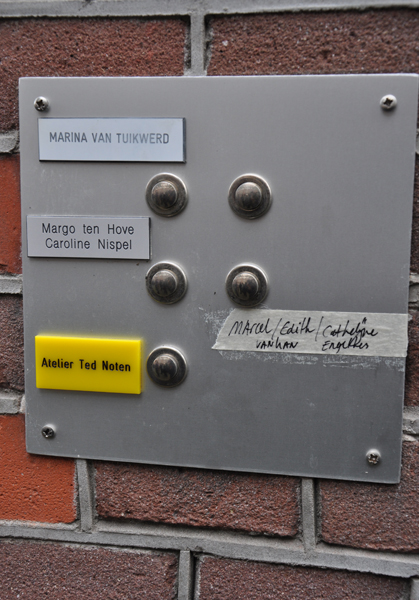
Dinner was held at Restaurant Café in de Waag. The house was originally built in 1488 and is situated in an area that never sleeps, Nieuwmarkt.
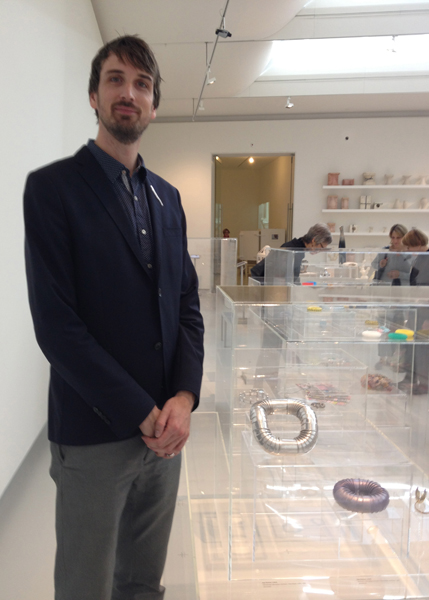
Today was pouring rain, and so it was a perfect day to take a bus outside of Amsterdam. First, we arrived at the museum ‘s-Hertogenbosch, Stedelijk. The Brazilian brothers Fernando and Umberto Campana designed the entrance hall, and the German designer Ingo Maurer made the lighting fixture. Curator Fredrik Baas showed us the collection of jewelry, which was on permanent display on the top floor. The jewelry and ceramic collections are the focus of ‘s-Hertogenbosch. They were established by Yvonne Joris (1950–2013), the former curator who had a strong and personal way of collecting jewelry and determined the direction for the museum. There is mainly Dutch jewelry, but she was also very interested in American jewelry. Although the museum owns many pieces from the US, only a few were on display.
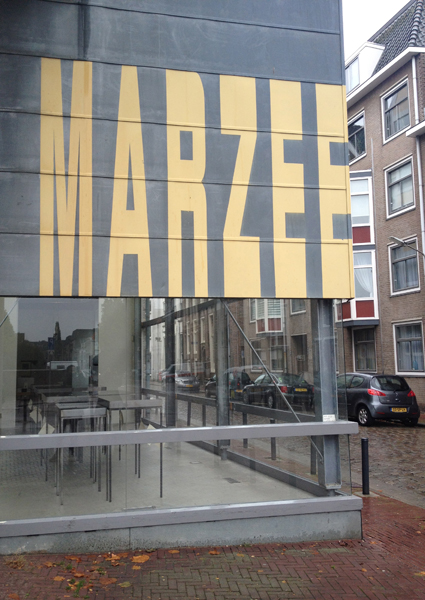
Next stop was in Arnhem at the Museum voor Moderne Kunst where curator Eveline Holsappel met us. She took us to see the exhibition of the Francoise van den Bosch award winner David Bielander. The Arcimboldo poster and the inspired and unique installation of jewelry were the highlights of our stop here. This museum has a jewelry collection that starts in the 1970s and mostly was assembled by the former curator Riet Neerincx, who died last year. The museum has entered a new era with a change in the curatorial staff in the same way as ‘s-Hertogenbosch, Stedelijk. Both museums had strong curators with a certain taste who ruled the department for many years, and now a new generation is taking over.
Our final stop for the day was the CODA Museum in Apeldoorn. Paul Derrez and Willem Hoogstede from Galerie Ra were on hand to proudly present their lives’ work in the exhibition Dare to Wear. This great collection has experimentation and innovation as a common thread with many iconic pieces. Simply put, they have bought the jewelry that they like. The collection includes more than 500 pieces made by 160 different makers from different 20 countries. In addition to Dare to Wear, there was a paper exhibition that included some jewelry artists, such as Attai Chen and Nel Linssen. The director Carin E. M. Reinders took us behind–the–scenes to the storage area and showed us some masterpieces by Dorothea Prühl and Onno Boekhoudt.
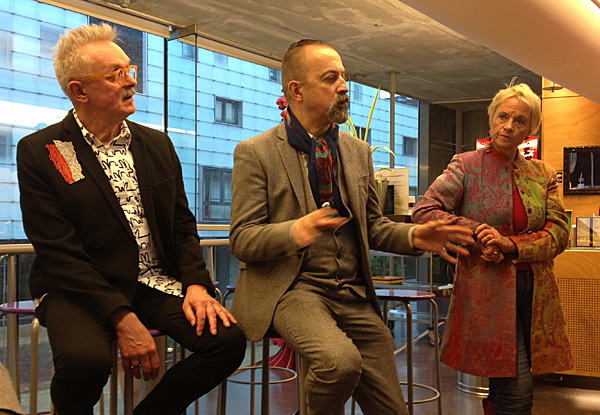
Monday, October 14
Our first stop this morning was the studio of Lucy Sarneel. It is in a residential area across from her apartment and was a challenge for the taxi drivers to find. The small and charming space was full of light, even on this gloomy day. Lucy makes use of zinc and traditional Dutch textiles in her jewelry. The zinc refers to utility, such as bathtubs, roofing parts, and jars that come from Lucy´s childhood. Her interest in textiles comes from her fascination with the southern Dutch traditional costumes. After the studio visit, we had our choice of a variety of sandwiches and salads at the neighborhood diner with Lucy as our guest.
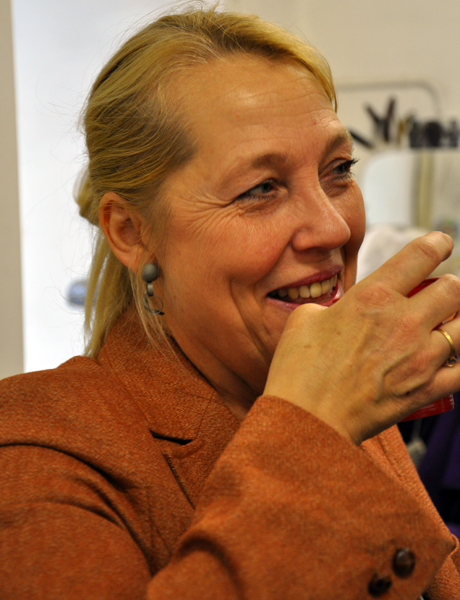
The young artist Nina Sajet, daughter of the well–known jeweler Philip Sajet, welcomed us to her apartment/studio in a peripheral area of Amsterdam. Nina´s intention was not to become a jewelry artist, and in fact she studied product design in Arnheim, but during her studies her work always ended up in the form of jewelry. So as a compromise, her jewelry is often made of clay in oversize shapes, such as the cabbage necklace, or giant beads.
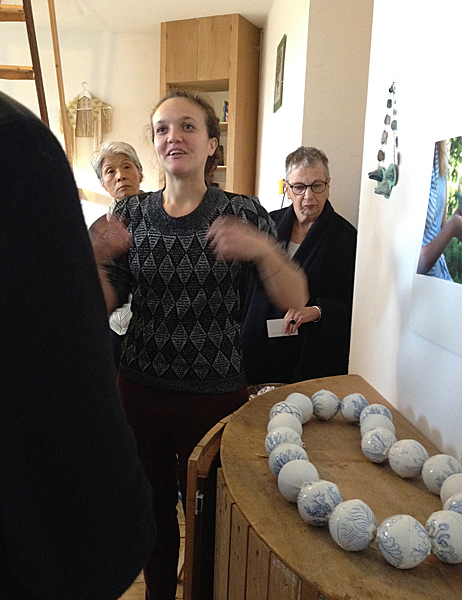
Next, we all risked vertigo by climbing the steepest stair ever in an old Amsterdam building to reach the studio of Evert Nijland. He and his companion welcomed us with a delicate coffee and tea buffet served in blue ceramic cups together with Dutch chocolate. Evert Nijland divides his time between Paris and Amsterdam, making jewelry that is very much concerned with the material he is using. A strong sense of materials is a common feature among Dutch contemporary jewelry artists, regardless of age or gender.
In addition to his sense of materiality, Nijland is inspired by classic art history. As a child, he was attracted to the Renaissance and Baroque decorative elements as well as older masters, such as Rembrandt and Dürer. When he started in the art department at the Rietveld Academie, classical art was overlooked and disregarded. Because of his great interest in this earlier art, he was advised to switch to the jewelry department where his interest in the antique was accepted. This interest is obvious in his new pieces of jewelry, where he has begun to add etchings from older prints to the metal.

Réka Fekete was born in Budapest, Hungary, and came to Amsterdam to study at the Rietveld Academie. She works and lives in a one-room space in a squatters’ building at Spuistraat in the center of Amsterdam. At any time, she might have to move. Architecture and movement have a great impact on her jewelry. She is drawing a lot, likes to work with zinc and wood, and between making, she swings on the large hoops and swings that are installed in her ceiling.
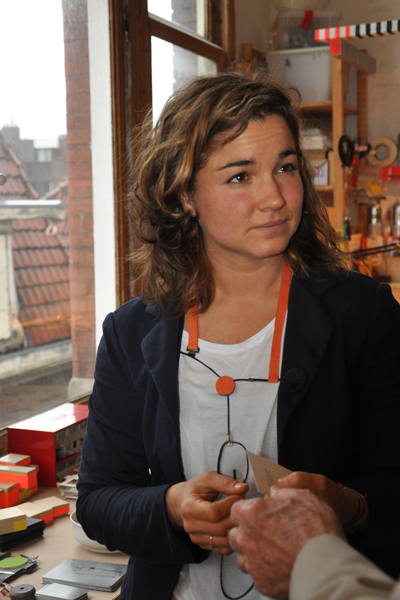
The final evening was a social event. AJF invited others in the area to join us for cocktails at Droog Hotel on Staalstrat. All the artists, gallery owners, curators, and all others the AJF group had the good fortune to see (as well as others we might have missed) were invited to join us. It was a lovely winding down after four adventuresome days. The final dinner was held at the Italian restaurant Incanto, Amstel 2.
Everyone loved this trip, and who wouldn’t since so many of the major museums, galleries, and artists, who have shaped the contemporary jewelry field come from the Netherlands. And we got to see most of them. Plus, it was a great group. We all enjoyed each other.

